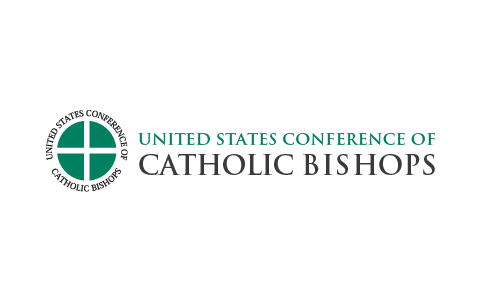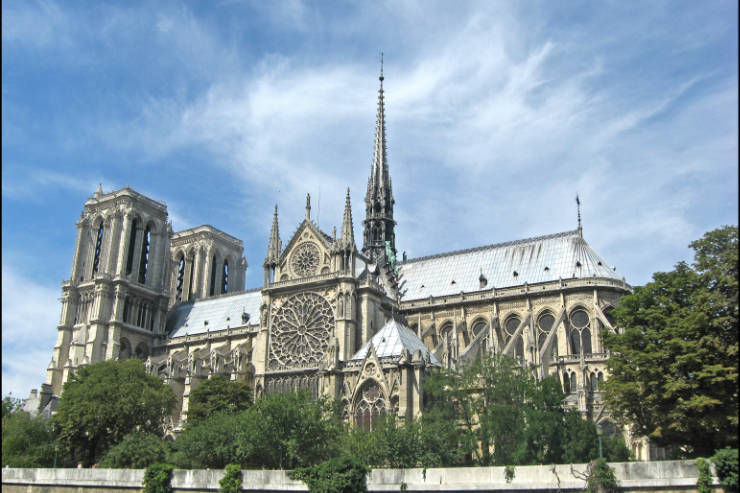 The word “worldview” comes to us from the German “weltanschauung” appearing in the middle of the nineteenth century. The American dictionary vacuously informs us that a worldview is, “the overall perspective from which one sees and interprets the world.” According to the leading lights of the City of Man and the dictionary, each unique person has his own “worldview” so there are presently at least seven billion worldviews. This particular opinion is grounded in the false notion that each living soul is the arbiter of his own “truth” and the creator of his own particular worldview. This is an illusion. A worldview is not each individual’s perception of the world, but a way, a map, or a paradigm by which to see and interpret the world. Without a deep examination of worldview, it does indeed appear as if everyone has their own world view, but in reality, there are only two worldviews. We don’t decide what these are, but by our gift of free will, we choose which worldview will inform our understanding of the world and by extension determine how we live our lives.
The word “worldview” comes to us from the German “weltanschauung” appearing in the middle of the nineteenth century. The American dictionary vacuously informs us that a worldview is, “the overall perspective from which one sees and interprets the world.” According to the leading lights of the City of Man and the dictionary, each unique person has his own “worldview” so there are presently at least seven billion worldviews. This particular opinion is grounded in the false notion that each living soul is the arbiter of his own “truth” and the creator of his own particular worldview. This is an illusion. A worldview is not each individual’s perception of the world, but a way, a map, or a paradigm by which to see and interpret the world. Without a deep examination of worldview, it does indeed appear as if everyone has their own world view, but in reality, there are only two worldviews. We don’t decide what these are, but by our gift of free will, we choose which worldview will inform our understanding of the world and by extension determine how we live our lives.
“To see things rightly…”
How we see and interpret the world can be done in only two ways, either we discover rightly the nature of the world and our place in it, or we don’t. There is a stark line between the two world views. To see things rightly is to adopt the Christian worldview which is the embodiment of seeing reality rightly because it is grounded in the ultimate explanation of the human person in the created universe we know as the Logos. The Logos is the spoken word of God, the Truth incarnate and the revealed certainty about the grammar of human existence. The a priori assumption of the virtuous worldview is that God the Father almighty created us and the universe as a superfluous act of love. God as the Creator of the universe is all powerful, all good and everything proceeds from Him. Because of the sin of our first parents we are fallen and by our darkened intellects, weakened wills and inclination towards evil, we find ourselves in this vale of tears with a great need for redemption. We have been created in the “image and likeness of God,” we all possess an intellect and free will. We have a purpose in life and that is to live so that we end in eternal beatitude. This is done by cooperating with grace so that in the fullness of time our natures can be perfected, not by our own power, but by the graces of God flowing from His mercy and justice.
“Non serviam.”
The other worldview appears to take on many different forms, and in one sense it does, but what all vicious worldviews have in common is that they possess disordered foundational assumptions. The false worldview assumes that “man is the measure of all things.” Instead of discovering the truth of reality, the man holding the vicious worldview becomes the arbiter of his own truth. Their apparent uniqueness disappears when it is revealed that at the root of all vicious worldviews is the dictum “I will not serve.”
In the beginning: God’s Preternatural Gifts to mankind and the serpent’s deceipt
The two worldviews have been observable from the beginning of time and are first documented in the Garden of Eden. Adam and Eve had preternatural gifts of perception, clear intellectual sight, an acuity of judgment, a precision of the senses, and astounding memory retention. They were also gifted the infused knowledge of things as they pertained to their station in the divine economy. There was no need for virtue because the appetites were subordinated to the right use of reason. Adam and Eve understood the world as God had intended it for them. They saw reality rightly until the serpent entered the Garden and presented them a temptation they could not withstand. Though forbidden from eating the fruit from the tree of knowledge of good and evil, the serpent laid out before them the deceit that undergirds the disordered worldview “ye shall be like gods.” And thus, all the different apparent worldviews are bound up in the deceit that God has been made in the image of man and it is man who creates not God. It is as simple as saying “I will not serve.” This is to see the world as one wishes it to be, not as it really is.
The Two Worldviews Illustrated Across the Ages
There are many great works throughout the ages that illustrate the two worldviews. They all contend that the ideas we espouse determine what actions we will take as we build either habits of virtue or vice, so as to cultivate good or bad character, which in turn will determine a noble or ignoble destiny. Though we most certainly have the free will to choose which worldview we want, we are not at liberty to invent the terms of reality or the implications of our choices. There are only two possible choices for worldview, there is a good worldview and a bad worldview best characterized by the concepts of virtue and vice. Both worldviews are explicated by the following enduring sources, spanning the last 3000 years of human history.
Allow me to introduce you to the Ancient Greek poet Hesiod, the Father of Didactic Poetry and contemporary of Homer. He left an account of the proper worldview in his masterpiece Works and Days. In it he instructs his wayward brother Perses on how to live the good life. He elucidates the two worldviews by describing the two kinds of strife, that labor of living to which we all must commit. Hesiod explains “there are two strifes, one you will praise and this one even rouses the shiftless to work, and the other increases vile war and calamity, she is cruel. The hearts of the two strifes are different.” Hesiod claims that the labor we choose to undertake is based on our worldview and we either choose the good strife or bad strife. He goes on to explain that the very hearts of the two strifes are the worldviews themselves. A proper worldview springing from the rightly ordered heart will lead to good and ethical strife that will inculcate good habits, good character and a noble destiny. The corrupted worldview out of the corrupted heart will lead to striving towards illicit gain and will bring pain and suffering to the actor and those around him.
Nine hundred years after Hesiod’s Works and Days the Apostle’s Catechism called the Didache echoes an exposition of Hesiod’s point in its very first line. The two worldviews are called “ways” as it is written, “there are two ways, one of life and one of death, but there is a great difference between the two ways.” The Didache instructs that “the way of life, then, is this: First, you shall love God who made you; second, love your neighbor as yourself, and do not do to another what you would not want done to you. And of these sayings the teaching is this: Bless those who curse you, and pray for your enemies, and fast for those who persecute you.” Implicit in this description is the Christian worldview based on a belief in certain unseen realities such as the Creator and the Objective Moral Standard rightfully call the Logos. Most importantly, even though it may be counterintuitive, this worldview considers and fulfills a human soul’s true purposeful ends.
The Didache also explains the unifying attributes of the false worldview called the way of death in saying that “the way of death is this: first of all it is evil and accursed: murders, adultery, lust, fornication, thefts, idolatries, magic arts, witchcrafts, rape, false witness, hypocrisy, double-heartedness, deceit, haughtiness, depravity, self-will, greediness, filthy talking, jealousy, over-confidence, loftiness, boastfulness; persecutors of the good, hating truth, loving a lie, not cleaving to good nor to righteous judgment.” Implicit here is that the way of death rejects the Creator and the objective standard in favor of the false supremacy of the self. These horrible things come very naturally to our fallen human natures, and though we do them, they do not meet our true human ends. When we choose to make ourselves the arbiters of truth and ignore the reality of the objective standard, we usher soul death into our lives.
Three hundred years later St. Augustine explained the two worldviews in his masterpiece The City of God. He tells us “there are two loves and from those loves come two cities. The love of self to the contempt of God, and the Love of God to the contempt of self.” In describing the two loves, St. Augustine illustrates that the very heart of a worldview is love. There are only these two kinds of love and they are contrary in every way. The bad love, or inordinate self-love is the heart of the worldview upon which the City of Man is built. It is that anarchic love that motivates and characterizes Hesiod’s conception of the bad strife. In the good worldview, the properly ordered love puts truth above the self and serves as the heart of the worldview that builds the City of God. That properly ordered love motivates the action best characterized by Hesiod as the “good strife.” St. Augustine clearly presents the two worldviews in a way that is foreign to this opaque age.
In 1995, St. Pope John Paul II wrote Evangelium Vitae, in which he echoed the Didache in coining the term “culture of death.” The good pope was echoing what Hesiod, the Apostles, and St. Augustine had left to posterity: that there are only two ways to look at the world, by the culture of life, the Christian worldview, and by the culture of death, the secular worldview. St. John Paul II explains the roots of the “culture of death” by stating that “we have to go to the heart of the tragedy being experienced by modern man: the eclipse of the sense of God and of man, typical of a social and cultural climate dominated by secularism.” At the heart of the Culture of Life is the understanding that God created man and that secularism is an incalculable reduction of humanity in which the machete of modern philosophy is used to hack away at the formal and final causes of man. This truncated culture that has lost sight of God, the true ends and purposes of a human soul, leads to death and destruction, just like the bad strife in the City of Man.
Only Two Worldviews
Concluding that there are only two worldviews instead of seven billion is understandably confusing because appearances would indicate otherwise. There is no doubt that radical individualists who inhabit the City of Man would argue that each human has his own worldview, but this denies objective reality. In Book 2 of the Nicomachean Ethics, Aristotle explains why this might be so perplexing because “goodness is simple or one, badness is manifold.” That evil is manifold gives the illusion that this manifold is different. It is similar to the legion possessing the demoniac, but though each demon is separate he is still in the collective body of evil. G.K. Chesterton lends explanation by pointing out that, “there are an infinite number of ways to fall, but only one way to stand.” In the right worldview we stand, in the vicious we fall. Even though there may be an infinite number of ways to fall, and falling is the unifying theme of the secular worldview.
The bad strife, the way of death, the city of man, embodied by the culture of death appear to have as many different forms as the souls who choose them over truth. But they all end the same, by the separation from God and in a state of misery. The two worldviews are an inversion of one another. We do not determine the nature of our worldview, we simply choose one. Our choice is to choose the life of virtue or of vice. We are not at liberty to choose the definitions of virtue or vice, though those who have chosen the vicious worldview have attempted to give themselves license to do just that. It is in vain that the City of Man rages against truth, goodness, and beauty when adopting the culture of death by the bad strife. Let it be our prayer that by that understanding gifted by the Holy Spirit, that we may be guided to choose the worldview that leads to eternal life, the worldview of the City of God embracing the good strife and the properly ordered love of God to the contempt of self.
Editor’s note: Steven Jonathan Rummelsburg will speak on “The Marriage Covenant in the Modern World: Practical Wisdom to Deepen Your Relationship with Your Spouse” at a Marriages Are Covenant evening in Roswell, Georgia on April 25, 2015. All are welcome, married and singles.













